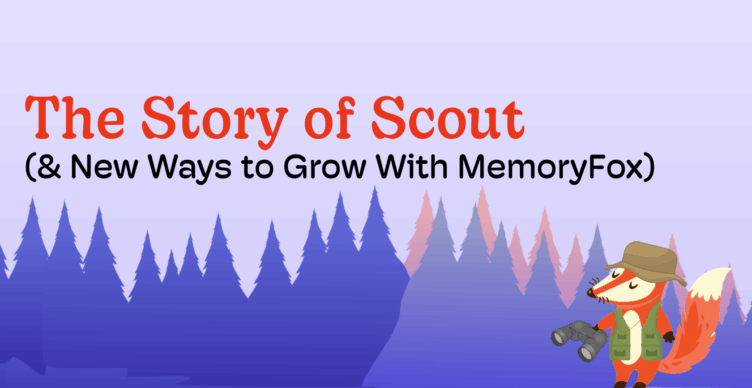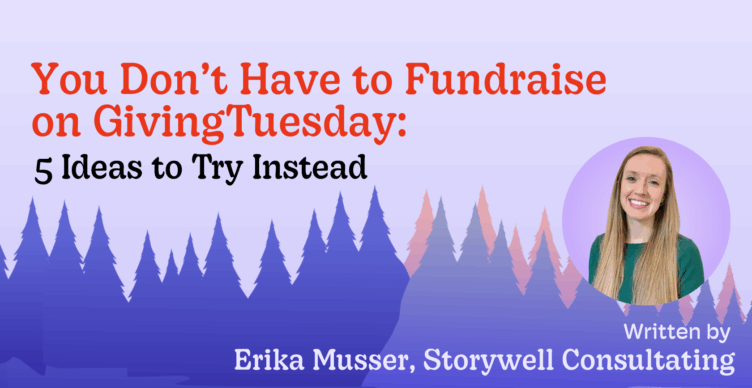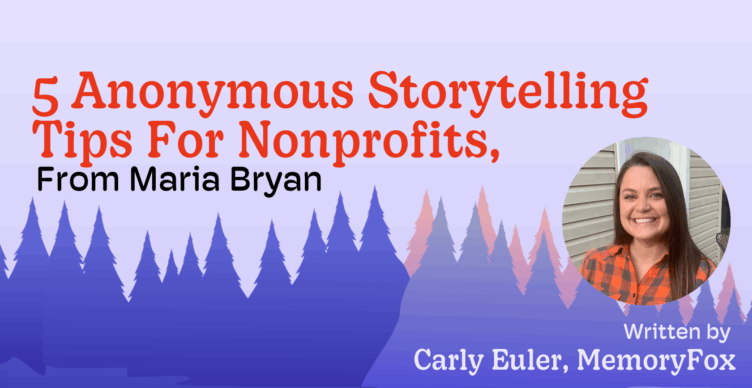Storytelling Strategy
How to Use Storytelling to Connect Donors to Your Mission
Using the techniques of good storytelling for nonprofits can make a huge difference in your fundraising results.
And the good news is that you already have stories all around you!
When you develop the skill to spot the stories and use the right framework to tell the story, you’ll raise more money.
You see, a good story is all about helping the listener or reader immediately understand the hero and the journey they’re on to overcome the painful situation they’re in – reaching their goal with your listener or reader’s help.
Remember, a story is NOT about your nonprofit. It’s about those you serve.
There are some universal elements to any compelling story, whether they’re in books, the news, or movies.
Let’s take a look at these elements and see how you can use them to craft your own story.
5 Elements of Nonprofit Storytelling
1. Identify the hero. Who is the hero of your story? Who is the story about? Here’s a hint – it’s NOT your nonprofit!
The hero is WHO your nonprofit helps, like veterans who are unhoused, inner-city youth, stray cats, or the audience attending your arts performance.
In short, the hero is the one who benefits from your nonprofit’s existence.
Your hero is one particular person or one family or one animal served by your program.
People can relate to ONE hero better than a group so stick to ONE.
2. Describe their current situation. What’s their pain? What’s their goal? Get clear about what your hero is struggling with that brought them to your nonprofit for help.
What do they want to change in their life as a result of your services? For example, a food pantry typically sees people show up at their door who don’t have enough food for their families.
Maybe they’re out of work or maybe they just don’t make enough to cover all their bills, so they need help with food.
They’re worried about how they’ll feed their kids and hold everything together when the month lasts longer than the paycheck.
These folks typically have the weight of the world on their shoulders and you could probably make a detailed list of their pain.
Their goal is to make sure their family doesn’t go to bed hungry tonight.
As you can see, the goal is usually the flip side of the pain.
3. Who or what is the villain? Every story has a villain or a bad guy. So, who or what is the villain in your story?
The villain could be the landlord who won’t fix the hole in the floor in the bathroom. Or the abusive spouse who caused the domestic violence victim to leave their home.
The villain could be the fact that the hero lost their job when their company shut down for an extended period of time. The villain could simply be poverty.
In short, the villain is the person or situation that keeps the hero from having the life they want.
4. What will defeat the villain? What solution does your nonprofit provide to help the hero defeat the villain?
In our food pantry example, what will defeat the villain temporarily is a box of food for the week that the hero can pick up on Tuesday and Thursday mornings from 9 am to noon.
Here, in step 4, is where your nonprofit finally shows up to play a supporting role.
Your nonprofit is not the hero – your nonprofit is the solution that helps the hero defeat the villain and reach their goal.
5. How can the reader/viewer help? At the end of the story is a time for a call-to-action that shows the reader or listener exactly how they can help you support your hero to defeat the villain.
Make a very specific tangible Ask to make it really easy for the listener or viewer to understand exactly how their support will make a difference – like $11.25 to provide an emergency food box to a family in need.
In doing this, you’re offering a clear way for people to help.
Putting It All Together
Below is a story using the food pantry example we’ve touched on up until this point.
See if you can identify all 5 elements of nonprofit storytelling as you read.
“A significant number of people in our community lost their jobs last month – when a fire started in a local factory and burned down. With jobs, these hardworking people are now struggling to put food on the table for their families, and many have found themselves in line at our food pantry to receive an emergency food box for the very first time. So many people have sought out help that we’ve given out nearly 6 times the amount of food in the past month, compared to a typical month last year.
We are committed to providing food for our neighbors in need to ease their worry. Unfortunately, with the dramatic increase in food requests comes an increase in expenses that wasn’t in our budget. But with your help, we can continue to provide food to everyone who needs it. Your gift of $11.25 will provide an emergency food box to a family in need. Please give today so we can be ready for the next families who need help.”
Did you notice the elements of the story?
- Who is the hero? It’s the people in our community who lost their jobs.
- What’s the villain? It’s the loss of their job due to the fire.
- What’s the pain? It’s the struggle to put food on the table.
- What’s the goal? To ease the worries of these families.
- What will defeat the villain? More emergency food boxes.
- How can the reader help? Funding the extra food boxes that weren’t in the budget and cost only $11.25 each.
Telling your story this way will capture your reader or listener’s attention, especially if you include some emotional language, like how worried the hero is about their kids going hungry or how they swallowed their pride to go to the food pantry for the first time.
When you include universal emotions that we can all relate to like fear, worry, doubt, and hope, it makes your story more relatable.
The Bottom Line 
Strong, effective storytelling can accomplish lots of good things for your nonprofit.
Stories connect your audience to those you serve and allow your audience to get to know your work in a deeper way.
A good story draws in the reader, helping them become invested in the outcome.
The right story reinforces your brand and your mission, inspiring people to give.
So what’s your nonprofit’s story?

About the Author
Sandy Rees
Chief Encouragement Officer, Get Fully Funded
Sandy shows leaders of small nonprofits how to fully fund their big vision so they can spend their time changing lives instead of worrying about money. She has helped dozens of small nonprofits go from “nickel-and-dime fundraising” to mastering donor-based fundraising, inspiring their donors to give often and give big. Learn how to raise the money you need to fund your new nonprofit without begging, doing without, or paying out of your own pocket. Click here to download her free ebook Fund Your Dream.




